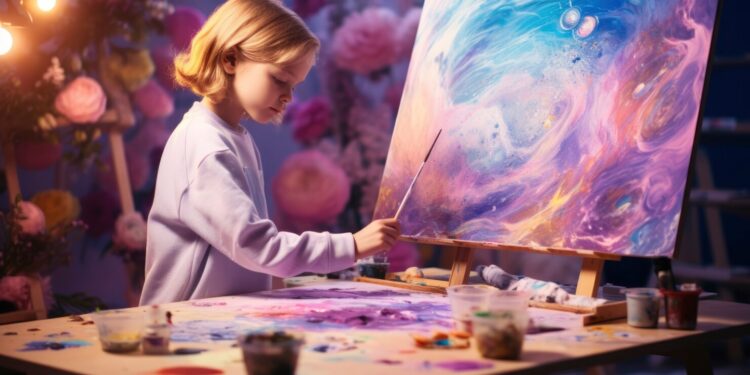When it comes to storytelling in movies, TV shows, or animations, one of the most important tools that creators use is a storyboard. A storyboard is a visual representation that helps organize and plan out scenes before they are filmed or animated. Today, we’re going to dive into the world of storyboards, particularly focusing on the techniques and insights provided by Ashley Ann Tahigan. Whether you’re a budding filmmaker or just curious about how stories come to life, this Ashley Ann Tahigan storyboard guide will help you understand the basics and beyond.
What is a Storyboard?
A storyboard is like a comic strip for a movie. It shows the main events in a story using pictures and notes. Each box on the storyboard represents a different scene or moment. You can think of it as a way to map out the adventure your characters will go on. This helps filmmakers and animators visualize their stories before they start filming or drawing. By using a storyboard, creators can save time, avoid mistakes, and make sure their ideas come together nicely.
Why is Storyboarding Important?
Storyboarding is crucial because it helps in planning the flow of the story. Imagine reading a book without any chapters; it would be confusing! A storyboard acts like chapters, giving each scene a place and showing how it connects to the next. Additionally, it allows the creators to experiment with different angles, expressions, and movements. This way, they can decide what looks best before committing to filming or animating.
When you think about a movie, there are many moving parts. Actors need to know where to stand, cameras need to know what to focus on, and all the background scenes have to fit perfectly. A storyboard organizes all of this information, making it easier for everyone to understand their roles. It’s a great way to share ideas with other team members, like writers, directors, and artists.
Who is Ashley Ann Tahigan?
Ashley Ann Tahigan is a talented artist and storyteller known for her unique approach to storyboarding. With a background in animation and visual storytelling, Ashley has worked on various projects, bringing stories to life through her captivating visuals. Her expertise not only lies in creating beautiful images but also in understanding how to convey emotions and actions effectively. Many aspiring creators look up to Ashley for her insightful techniques and tips on storyboarding, making her a go-to resource for those interested in the craft.
Key Elements of Storyboarding
Ashley Ann Tahigan emphasizes several key elements when it comes to storyboarding. Let’s explore these elements to give you a clearer picture of how to create your own storyboards.
1. Characters and Expressions
The first thing you want to think about in your storyboard is your characters. Who are they? What do they look like? How do they feel in each scene? Ashley suggests that each character should have clear emotions that match the story’s mood. For instance, if your character is happy, show that with a big smile. If they’re sad, a frown or tears can convey their feelings. These expressions help the audience connect with the characters on an emotional level.
2. Scene Composition
Next, let’s talk about how each scene is set up. This is called composition. Composition is about where you place the characters, objects, and backgrounds in your drawings. Ashley highlights the importance of balance and focus. You want your audience’s eyes to be drawn to the most important parts of the scene. For example, if two characters are having a conversation, make sure they are clearly visible and centered in the frame.
3. Camera Angles and Movement
Another exciting part of storyboarding is choosing the camera angles and movements. Ashley often plays around with different perspectives to see what feels right for each scene. A low-angle shot can make a character look powerful, while a high-angle shot can make them seem small and vulnerable. Additionally, consider how the camera will move. Will it zoom in on a character’s face or pan across a landscape? These choices can dramatically change how the story is perceived.
4. Transitions Between Scenes
Transitions are like bridges connecting one scene to another. Ashley believes that smooth transitions help the story flow better. For instance, if one scene ends with a character running and the next starts with them arriving somewhere, you can use a “wipe” transition to show the movement. This keeps the audience engaged and makes it easier for them to follow along. Think about how you want each scene to lead into the next and plan your storyboard accordingly.
5. Text and Dialogue
Sometimes, pictures need a little help from words. Including text or dialogue in your storyboard can clarify what characters are saying and add depth to the scenes. Ashley recommends writing down the key lines of dialogue that occur in each scene. This not only helps in understanding the story better but also ensures that the actors know their lines when it’s time to film.
6. Timing and Pacing
Finally, let’s talk about timing. Every good story has a rhythm. Some moments need to be fast and exciting, while others should be slow and emotional. Ashley suggests that when storyboarding, you should think about how long each scene will take. Use arrows or timing notes to show how fast or slow the action happens. This will help everyone involved understand the pace of the story and keep it engaging for the audience.
Tips from Ashley Ann Tahigan for Storyboarding
Now that we’ve covered the basic elements, let’s look at some tips that Ashley Ann Tahigan shares for effective storyboarding.
1. Start with Thumbnails
One of Ashley’s favorite techniques is to begin with small sketches called thumbnails. These are quick and rough drawings that help you lay out your ideas without worrying about details. This allows you to focus on the overall story and how each scene connects. Once you’re happy with your thumbnails, you can expand on them and create more detailed storyboards.
2. Use Reference Images
Ashley also recommends using reference images. These are pictures that inspire your scenes or show how things should look. Whether it’s a photo of a location or a drawing of a character, having references can help you stay consistent and get ideas for your own storyboards. Don’t be afraid to gather inspiration from different sources.
3. Collaborate with Others
Storyboarding doesn’t have to be a solo activity. Collaborating with others can lead to fantastic ideas and improvements. Ashley encourages creators to share their storyboards with friends, family, or fellow artists. Getting feedback can help you see things from a different perspective and refine your work.
4. Stay Flexible
It’s essential to stay flexible during the storyboarding process. Sometimes, ideas change, and that’s okay! Ashley reminds us that the storyboard is a guide, not a rulebook. If a scene isn’t working as you thought it would, don’t hesitate to make adjustments. Being open to changes can lead to a more compelling story.
5. Practice Regularly
Lastly, practice makes perfect! Ashley believes that the more you storyboard, the better you will become. Try creating storyboards for different genres or styles. Experiment with different characters and settings. The more you practice, the more you will develop your unique style and storytelling voice.
How to Create Your Own Storyboard
Creating your storyboard can be a fun and rewarding process. Here’s a simple step-by-step guide to help you get started.
Step 1: Gather Your Ideas
Begin by brainstorming the story you want to tell. Write down your ideas, themes, and characters. Think about the beginning, middle, and end of your story. What journey will your characters take? What challenges will they face?
Step 2: Create Thumbnails
Next, create thumbnails for each key scene. Don’t worry about making them perfect; just focus on the main actions and compositions. Keep it simple and quick. You can use small squares of paper or a sketchbook for this part.
Step 3: Develop Detailed Panels
Once you’re happy with your thumbnails, start developing detailed panels. Expand each scene with more information, like character expressions, backgrounds, and dialogue. This is where you can add all the elements we discussed earlier.
Step 4: Organize the Storyboard
After you’ve finished your panels, organize them in order. This is important to ensure that the story flows well. Number each panel so it’s easy to follow, and make any necessary adjustments to improve transitions.
Step 5: Share and Get Feedback
Don’t forget to share your storyboard with others! Ask for feedback and be open to suggestions. This will help you refine your story and make it even better.
Step 6: Revise and Finalize
Finally, take the feedback you’ve received and make any necessary revisions. Once you’re satisfied with your storyboard, finalize it. This will serve as your blueprint for the next steps in your project, whether it’s filming, animating, or creating a comic.
Conclusion
In conclusion, the Ashley Ann Tahigan storyboard guide offers valuable insights into the world of storyboarding. By understanding the key elements, following Ashley’s tips, and practicing regularly, you can become a skilled storyboard artist yourself. Remember, storyboarding is all about creativity and exploration. So grab your pencils and start mapping out your stories today! Whether you’re dreaming of creating an animated series, a short film, or a graphic novel, storyboarding will help bring your ideas to life.






